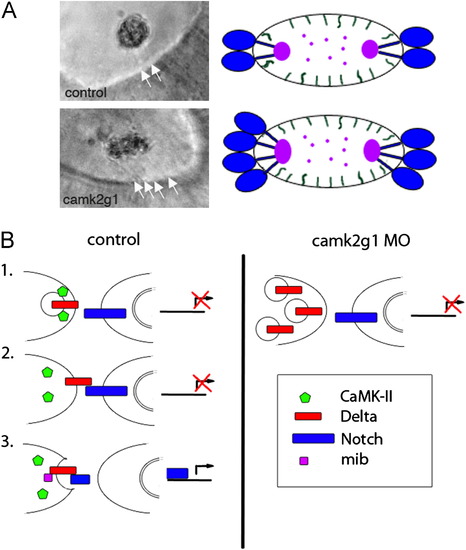Fig. 7
|
Model of action. (A) Screen shots from control and camk2g1 morphant embryos at 24 hpf. Control embryos have two immotile kinocilia (white arrows) bound to the seeding otolith. Camkg1 morphants have extra hair cells as demonstrated by extra kinocilia (B, white arrows). (B) The additional hair cells are formed as a result of improper Delta–Notch signaling. (1) In control embryos CaMK-II aids in secretory vesicle trafficking and fusion to the plasma membrane. (2) Once Delta is deposited at the membrane it can bind to the Notch receptor. (3) Transendocytosis occurs due to mib (mindbomb; E3 ubiquitin ligase) activity, causing the NICD to be cleaved and enter into the nucleus influencing transcription. In the absence of CaMK-II, Delta ligands are not deposited at the membrane and accumulate in secretory vesicles in the cytosol, therefore inhibiting transcription in the Notch expressing cell. |
Reprinted from Developmental Biology, 381(1), Rothschild, S.C., Lahvic, J., Francescatto, L., McLeod, J.J., Burgess, S.M., and Tombes, R.M., CaMK-II activation is essential for zebrafish inner ear development and acts through Delta-Notch signaling, 179-88, Copyright (2013) with permission from Elsevier. Full text @ Dev. Biol.

